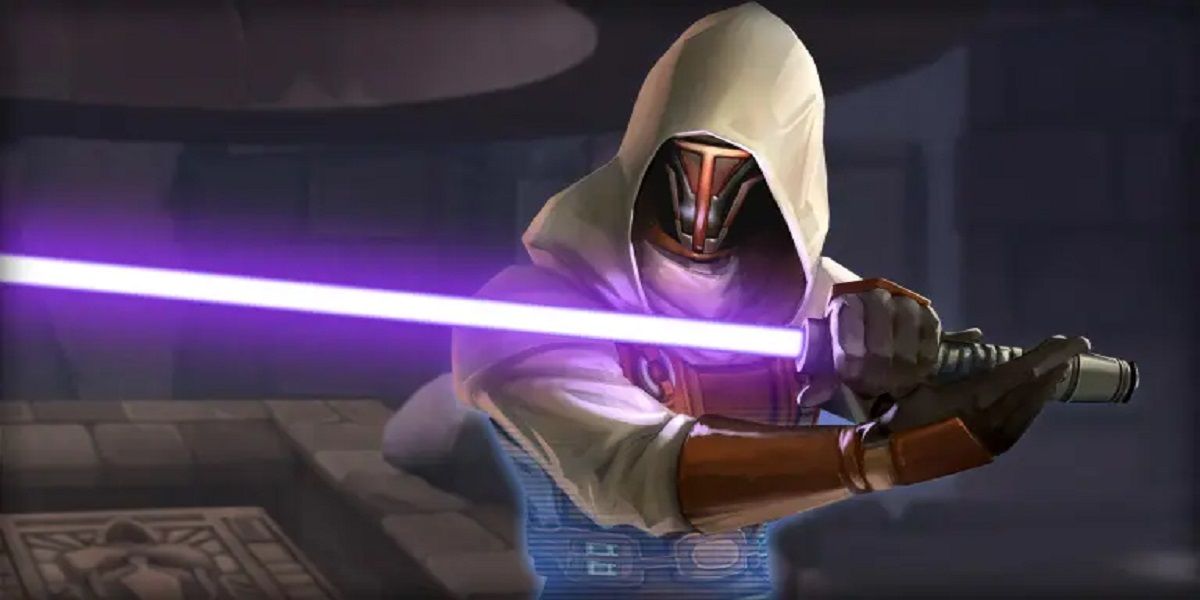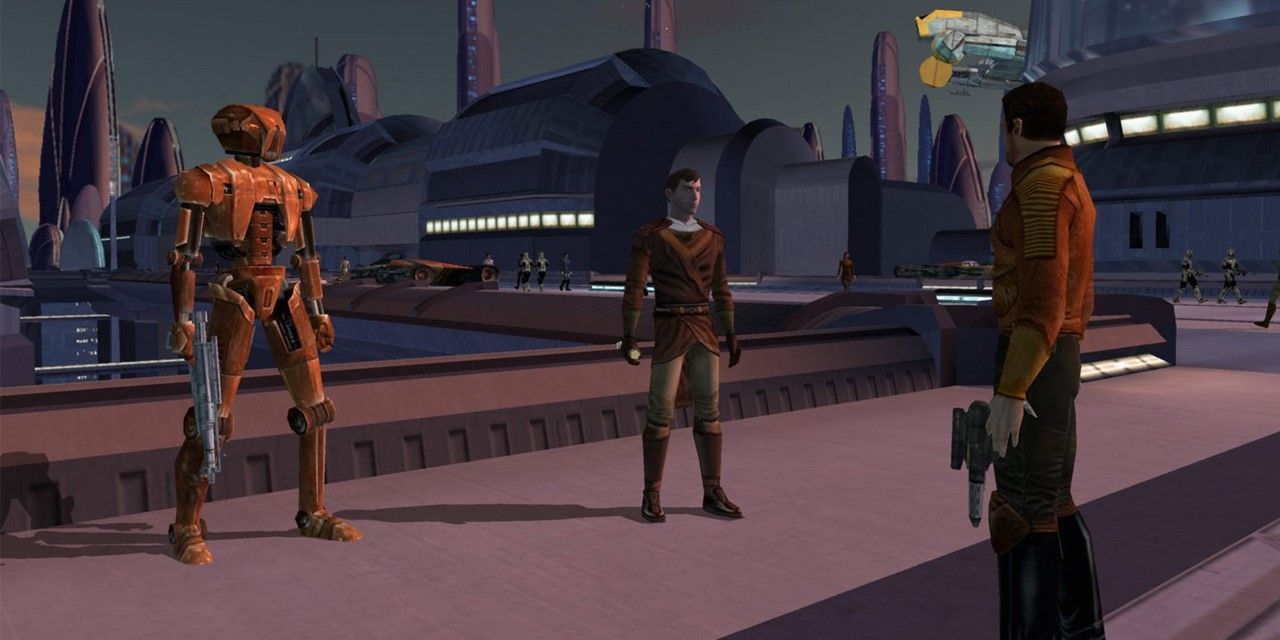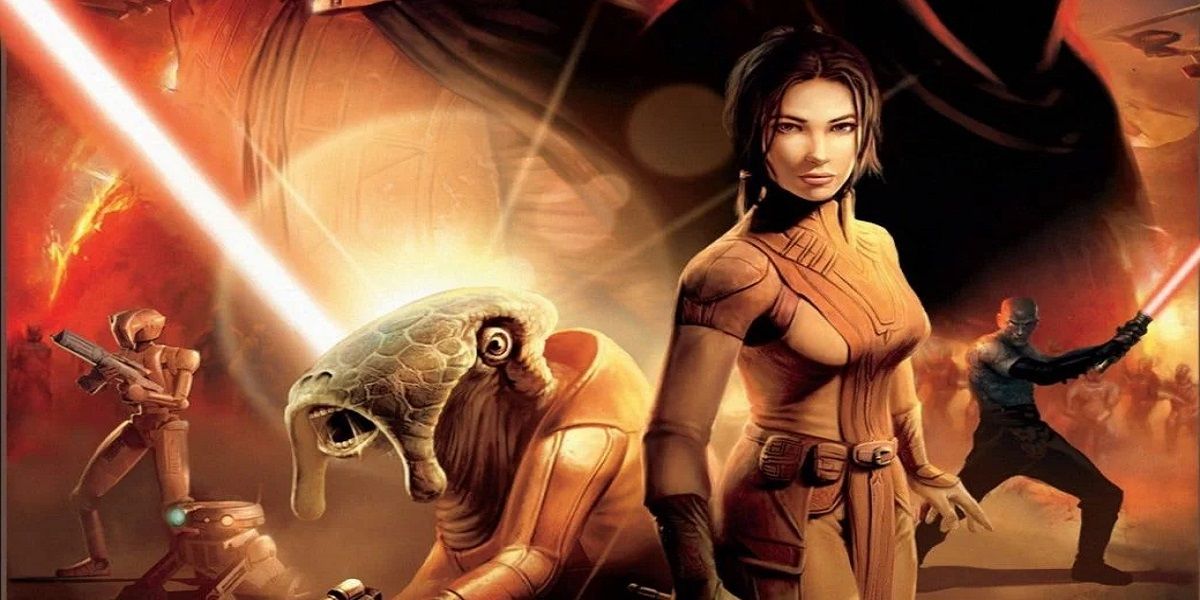The Star Wars brand is an unstoppable cultural juggernaut, a looming cultural presence whose influence and reach extend across media and beyond consumer borders. As one of the first franchises to ever consider the idea of branded tie-ins, especially with regard to the toy market, George Lucas’ massively influential space sage has gone on to spawn countless movies, spinoffs, TV series, merchandise and, of course, video games.
Dozens of Star Wars tie-in games have been released over the years, to the extent that much of the exploration of the series’ lore takes place not on the silver screen by via the medium of the ever-growing gaming industry. From arcade titles to contemporary AAA heavyweights like Fallen Order and, most recently, LEGO Star Wars: The Skywalker Saga, Lucas’ world remains an ever-profitable source of revenue. However, there is one title that still holds a level of affection to which all others must ultimately aspire: Star Wars: Knights of the Old Republic.
Knights of the Old Republic is a rare thing within gaming circles: a title acclaimed and adored as much by critics as it is by the legions of players who cite it as the finest Star Wars game of all time. Not only is KOTOR regarded as the best game in the Star Wars canon, many rightly consider it to be one of the finest video games ever produced.

A relative outlier for a Star Wars game, KOTOR takes the form of a traditional RPG where players choose from three set character classes (Scoundrel, Scout, or Soldier) before later selecting from three Jedi classes (Guardian, Sentinel, or Consular). As players progress, they can build skills, tiered feats, and Force powers, leveling up and distributing points to become a deadly intergalactic warrior. This lends the game a sense of identity, giving personalization and depth that most games before and since simply haven’t. In giving players freedom, KOTOR allowed fans and novices alike to live out their intergalactic fantasies.
This was at the heart of what made Knights of the Old Republic great, and it didn’t stop with customization or skill levels. Very few games before or since have immersed players in the Star Wars universe to the same extent, with even modern releases feeling shallow and superficial in comparison. With varied, detailed and reactive worlds for one to explore, few Star Wars properties, games or otherwise, let fans wallow in the franchise’s deeply compelling lore like KOTOR.
This is all aided by a compelling, unpredictable, and surprisingly mature story that easily rivals the best work of its cinematic counterparts, a sweeping tale centering on the need to destroy a droid factory known as the Star Forge. With unparalleled levels of player choice, one’s effect on the game’s ultimate ending is meaningful and resonant. The player’s actions determine whether their character will destroy the Forge and become a Jedi hero or else take control of it and become an all-powerful Sith Lord.

Having a compelling central conflict of light versus dark at its core means that KOTOR gives players a sense that their actions truly matter in determining the fate of the galaxy. With a massive cast of memorable characters, including the iconically psychopathic assassin-droid HK-47, KOTOR never allows itself to be as tedious or stodgy the way other RPGs often become.
KOTOR isn’t perfect, of course. Nowadays, parts of its gameplay seem outdated and somewhat incongruous in a Star Wars title, and the turn-based, Dungeons & Dragons-inspired combat system feeling particularly archaic and out of place. It’s no surprise that the game’s graphics have started to show their age visually as it approaches its 20th birthday, particularly when compared to the hyper-realistic look of many modern games.
Even so, these are minor, understandable quibbles in a sea of excellence, and they don’t impede the majesty of KOTOR‘s immense scope, ambition, and attention to detail. BioWare’s seminal title may have been surpassed by better-looking, more technically sophisticated game, but nothing else really measures up when it comes to capturing Star Wars‘ universe and lore while allowing the audience to participate in it.
Read Next
About The Author

